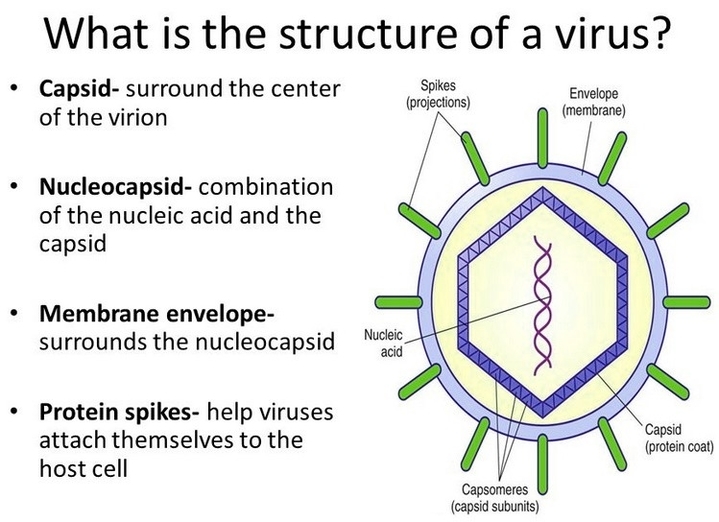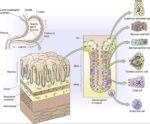Structure of a Virus
A virus is a microscopic infectious agent that replicates only inside the living cells of an organism. Viruses can infect all types of life forms, from animals and plants to microorganisms, including bacteria and archaea.
Virus Particle
A complete virus particle, known as a virion, consists of nucleic acid surrounded by a protective coat of protein called a capsid. The nucleic acid can be either DNA or RNA. The capsid is made from proteins that are encoded by viral genes within their genome. The shape of the capsid may vary from one type of virus to another. The shape of the capsid serves as one basis for classification of viruses.
Capsid
The capsid is a protein shell that surrounds the genetic material of a virus. It is composed of several oligomeric structural subunits made of protein called protomers. The observable 3-dimensional morphological subunits, which may or may not correspond to individual proteins, are called capsomeres.
Envelope
ome viruses have an envelope of phospholipids and proteins. The envelope is made from portions of the hosts cell membrane. It surrounds the capsid and helps protect the virus from the hosts immune system. The envelope may also have receptor molecules that can bind with host cells. They make it easier for the virus to infect the cells.
Helical Viruses
Helical capsids are made up of a single type of protein subunit stacked around a central axis to form a helical structure. The helix may have a hollow center, which makes it look like a hollow tube. This arrangement results in rod-shaped or filamentous virions.
Icosahedral Viruses
Icosahedral capsid symmetry gives viruses a spherical appearance at low magnification, but the protein subunits are actually arranged in a regular geometrical pattern, similar to a soccer ball; they are not truly spherical.
Viral Tegument
The viral tegument is a special layer between the capsid and the viral envelope in some viruses. This layer is involved in several stages of the viral life cycle, such as replication, virion assembly, and suppression of host immune responses.
Conclusion
In conclusion, the structure of a virus is complex and varies from one type of virus to another. However, the basic components include a nucleic acid genome, a protein coat or capsid that protects the genome, and in some cases, an outer envelope of lipids. The structure of a virus plays a crucial role in its ability to infect host cells and replicate.



